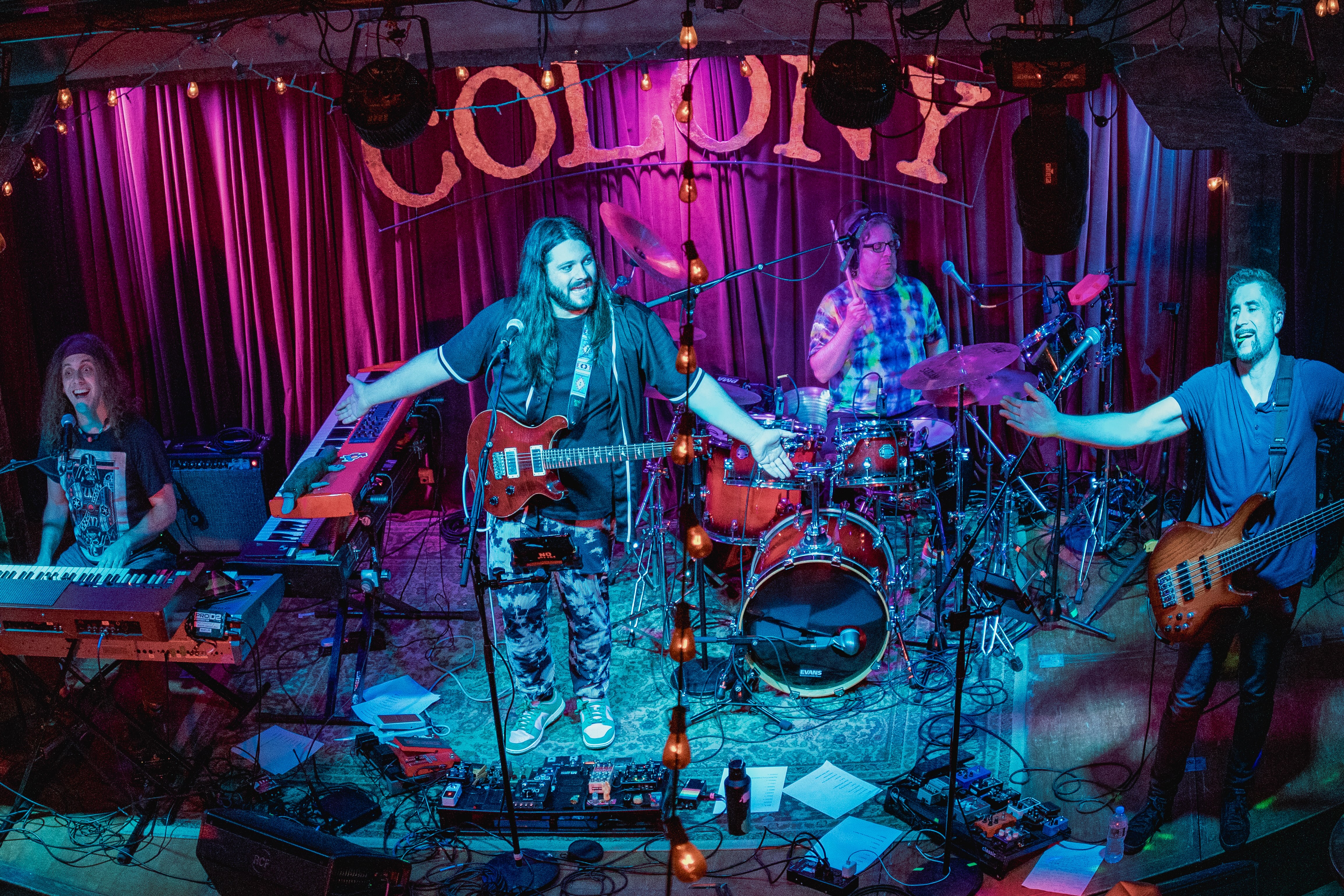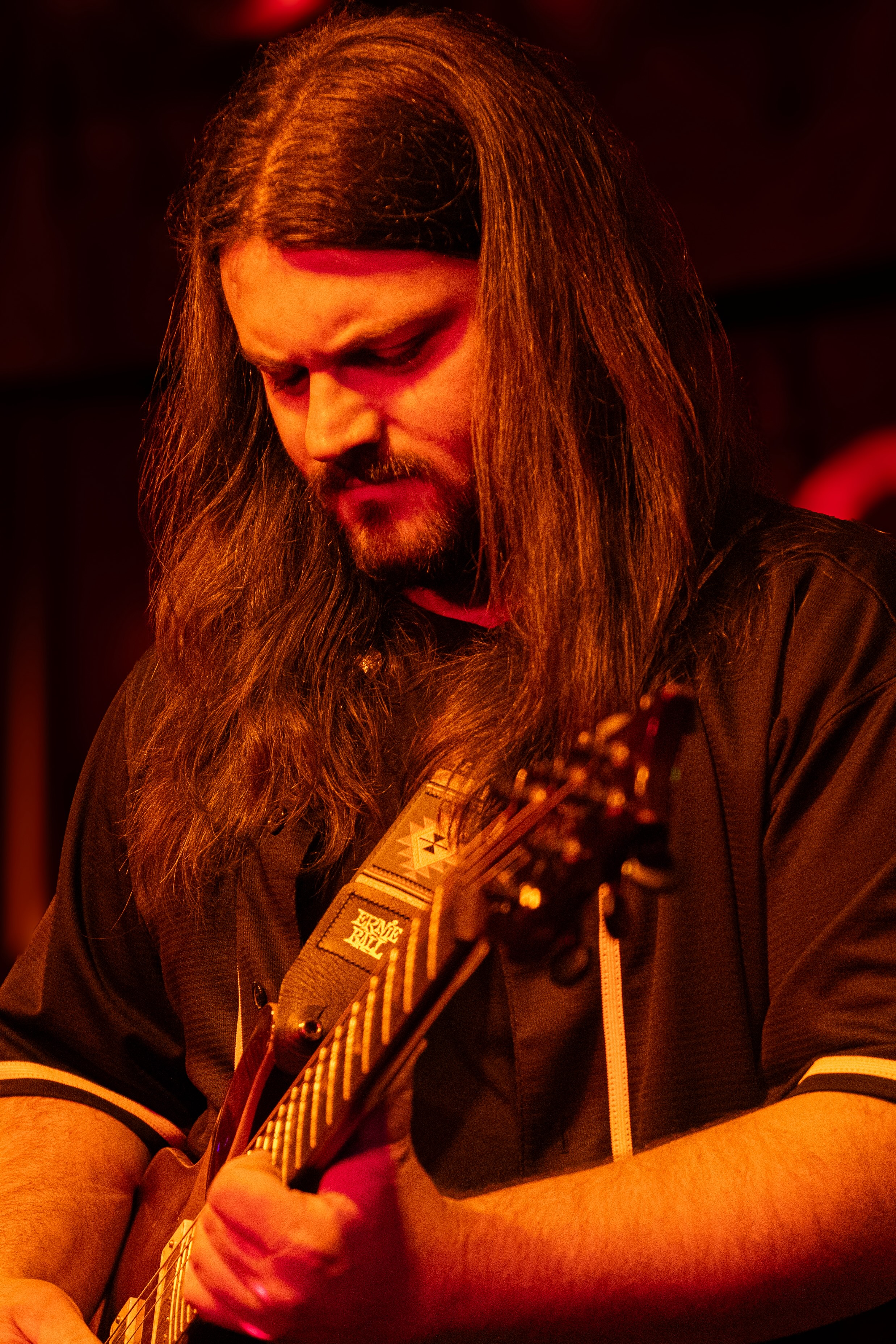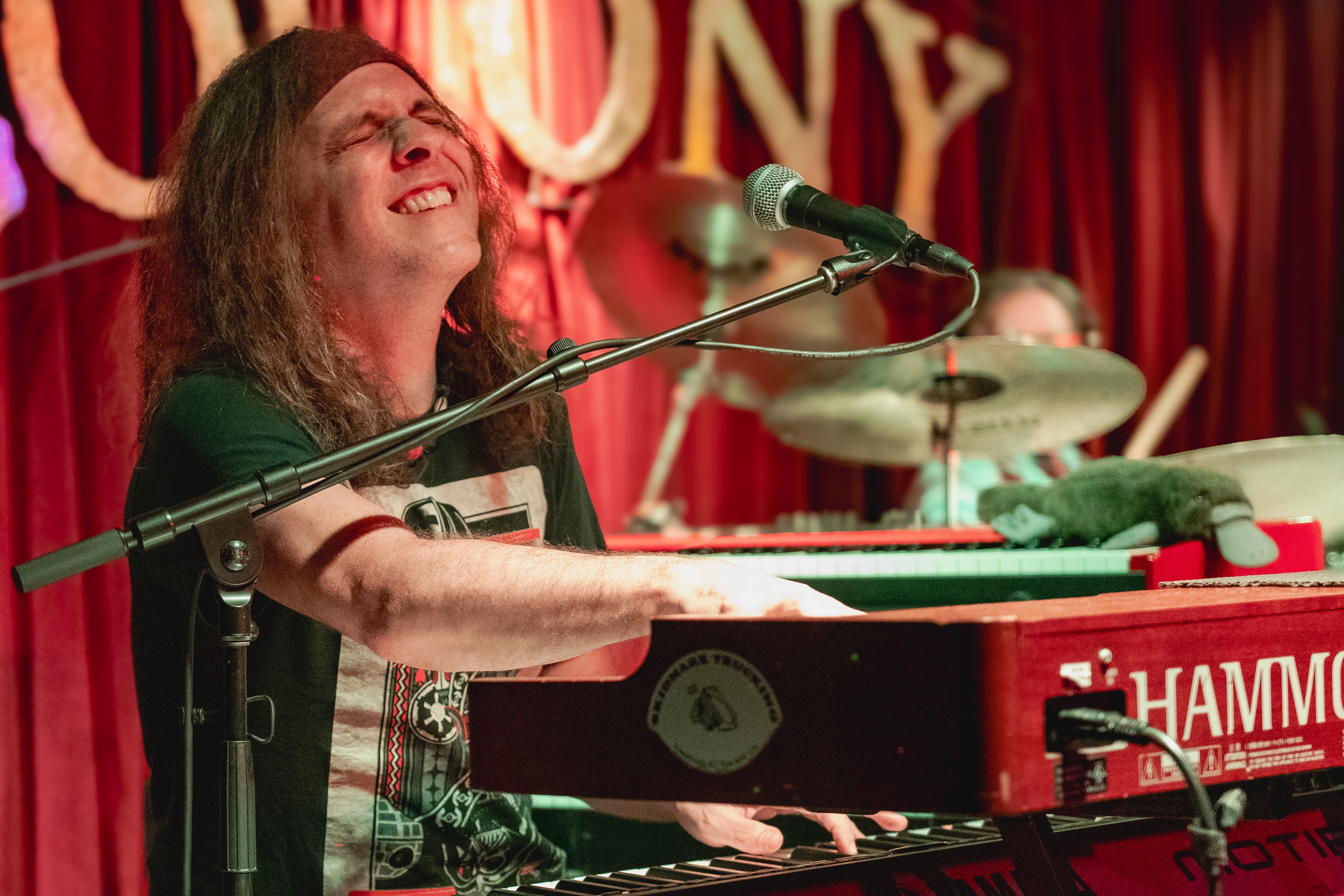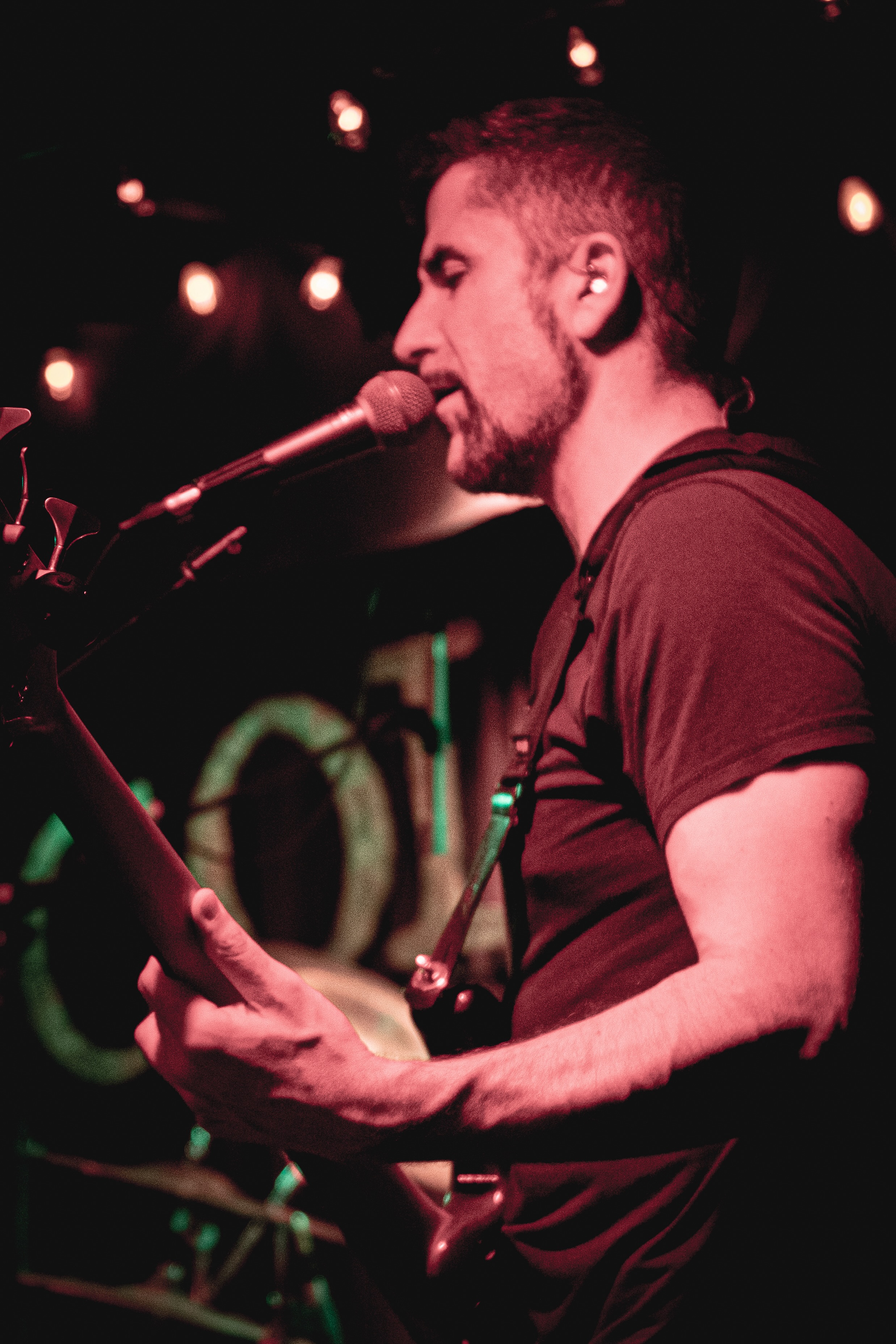REPRISE: THE UN-FUCKING-BELIEVABLE PHISH TRIBUTE A LA DARK STAR ORCHESTRA
By Matt Hoffman (tonapdivine)
Reprise, the Phish tribute who to date has played just four shows, is most easily understood as doing with the music and spirit of Phish, what Dark Star Orchestra has been doing for decades with those of The Grateful Dead: they perform shows drawing on past Phish setlists and do so largely as Phish did, warts and all, though to hear them tell it, the “mistakes” are where the magic often happens. For the fans of standardized tests (we can smell our own), think of it this way: Dark Star Orchestra:Grateful Dead::Reprise:Phish. For the math nerds (h/t jfcnj!), ((DSO/GD) * Phish) + ∈
On June 13, 2024, I asked Tom Marshall to describe the band, who to that point had played only two public shows just four months prior at Nectar’s. (They’ve since doubled their show count, playing their third and fourth shows, respectively, at Milkboy Philly, where I spoke with Tom, and Colony Woodstock). He gave a one-word response: un-fucking-believable. Some might say it’s his job to say this, and they wouldn’t be wrong: he manages the band with RJ Bee, his co-founder in Osiris Media, the musical storytelling platform that since 2018 has published over 50 podcasts, many of them Phish-related. Others might suggest the influence of cognitive bias, as Marshall has known and collaborated with the band members for years and has played a variety of critical roles in the band’s formation and rapid evolution.

But this is not the first Phish tribute to come around – heck, everyone in Reprise has played in at least one Phish tribute, often with one another! – and…I mean…y’know…Tom wrote the book. He didn’t have to help put Reprise together: he chose to. He doesn’t have to manage Reprise: he gets to.
Why?
It’s a small world, but we all start out small
While the earliest seeds of Reprise arguably were sown decades ago by Trey, Tom, and friends at The Rhombus, the band’s more proximate origin story begins in December 2022, when Osiris hosted a one-off Fall ‘97 Phish tribute at Ardmore Music Hall and asked Cal Kehoe (Pink Talking Fish) to put together a band for the event. (Video here, music at 01:28:00.) The band that night included bassist Chris DeAngelis (The Machine, Kung Fu) and drummer/musical polymath Adrian Tramontano (Twiddle, Kung Fu), as well as Jeremy Kaplan (Dogs in a Pile) and Andrew Pfeiffer (Feel Free), with a guest appearance by Scott Chasolen (ulu, The Machine). Fast forward to summer 2023, when the as yet unnamed project went on to play another Osiris event, this time a Phish pre-show at The Bitter End, this time featuring Kiran Edwards (Residual Groove). (Video here, music starts at the 57-minute mark.) By then, it was clear to all involved that there was a “there” there: the flag had been planted. (James Sissler wrote a great piece for Live for Live Music, detailing the band’s history.)

This isn’t who it would be if it wasn’t who it is
There are both practical and philosophical reasons Reprise makes sense as a band. “These guys are tremendous friends and HUGE Phish fans,” says Marshall. “They’ve all played together in various combinations for a long time, and for them, this is a dream gig.” Marshall has known Chasolen since the early 2000s, when Chasolen’s former band, ulu, opened for Marshall’s former band, Amfibian. (Fun fact: Amfibian only played 25 or so live shows.) Jefferson Waful, renowned lighting director and Director of Video for On Location, a VIP hospitality company, ran lights at the Reprise Milkboy show and said he knew the band was serious when he knew Chasolen was involved.
Since his ulu days, Chasolen has gone on to play for years with DeAngelis, who in turn has a long history of playing with Tramontano, and they’ve all played with Kehoe. “It starts with people and relationships,” says DeAngelis. “It’s so fun to play with musicians of this caliber who are as passionate about this music as I am. Phish is such a part of the fabric of my life.” Tramontano agrees: “Over years of playing together, we’ve all learned, both from Phish and one another, to take risks, recover, and just go with it.” Says Chasolen, the group’s elder statesman, of Kehoe, its youngest: “It doesn’t feel like there’s an age difference between us. That’s what happens when you connect with a fellow artist.”
What's new is old, what's old is gone
Chasolen saw his first Phish show in 1992 in New Jersey on the H.O.R.D.E. Tour. He’s seen hundreds of shows since then and resonates most with the Phish 1.0 era, as does Kehoe, perhaps ironically, as he wasn’t alive for most of it! DeAngelis’ first show was Great Woods '95, which prompted him to pick up the bass and pay more attention to the band than he had before, such that he really “got it” and more fully appreciated his second show the following summer at Hersheypark. Tramontano’s first show was New Year’s ‘97 at MSG, less than a month after the show they covered in Philly. (While Reprise has only performed 1.0 shows to date, Bee notes that any show in any era is on the table.)

Let’s get this show on the road
OK, so how were the shows? I’ll echo Marshall’s sentiments and say these guys are un-fucking-believable. This is the closest many of us, myself included, will get to seeing Phish in a small club, and I don’t see myself passing up any realistic opportunities I get to see them. (They’ll be at Park City Music Hall in Bridgeport, CT, on September 5th, and at The Wonder Bar in Asbury Park, NJ, the following night.)
At Milkboy, the band chose to recreate 12/3/97, the second of two shows they played at the Philly Spectrum (RIP) on the iconic Fall ‘97 tour. (My first show was the night before, as I discussed recently on the excellent Attendance Bias podcast with Brian Weinstein, a friend of over 20 years whom I met on Oceans of Osyrus (f.k.a. The Rhombus), the best Phish-adjacent message board that nobody’s heard of.)
From the first notes – er, rhythmic guitar scrapes – of opener “Punch You In the Eye,” it was abundantly clear that these guys are on to something. They set the tone for the night, striking the perfect balance between tight and relaxed. As any proper Phish tribute would, Kehoe and DeAngelis did the Trey/Mike dance during “The Landlady,” and went on to get everyone bopping with their take on “My Soul.” Next, they absolutely slayed “Drowned,” with DeAngelis nailing Mike’s best impression of Roger Daltrey and the band stretching out into a long, cow funk jam apropos of Fall ‘97. They went on to blend vocal harmonies perfectly on “The Old Home Place” and provided the opportunity for Chasolen to get funky on his clavinet during “2001,” a highlight for him. They ended the first set with a classic Fall ‘97 jam, though the ceiling was too low for them to bust out the trampolines. “If you don’t have chemistry as a group,” said Chasolen, “the jams can be harder to nail than even the compositions.” Fortunately for all at the show, the chemistry was there, and they played a fantastic first set.
The highlights of the night came during the second set, starting strong with “David Bowie” into “Possum,” into a long jam where they took their time and leaned in; both DeAngelis and Tramontano cited this part of the night as a highlight. The remainder of the set contained classic Fall ‘97 tunes “Prince Caspian,” “Frankenstein,” and “Harry Hood,” with a “Crossroads” encore. Waful, who has seen Phish around 400 times and has run lights for over 1500 shows between his years spent working with moe. and Umphrey’s McGee, said the experience was really fun, even in a tiny room with a simple rig. “These songs are so iconic that just going to blue at the right time in Harry Hood or red at the right time in YEM is enough to elicit an emotional response from the crowd, even if it's on a subconscious level. If I do lights with these guys in bigger rooms, using moving lights and haze would be the next logical step.”
Don’t worry about falling
The next night in Woodstock, Reprise recreated the legendary Big Birch show (07/13/1994) that even the band has described as a trainwreck at times, most notably at the end of “Possum,” the second set opener. Chasolen actually attended the show and recommended the band take it on, given the fun challenge of recreating some of the flubs. “Before this and every show,” he said, “we discuss the notable themes or events that happened during the original jams and use them as mile markers for our own; then we connect the dots with our own improvisations.”
They opened the show with “Buried Alive,” which I viewed as a consolation prize because the show they played the night before was one day off from my first show, where the band opened with it. (The Big Birch show also included “Sample” and “Disease,” two other tunes they played the first time I saw them.) As with “The Old Home Place” the night before, they nailed the vocal harmonies during “Poor Heart,” with Kehoe perfectly capturing Trey’s suburban-New-Jersey-electric-bluegrass licks.
The set contained two highlights for me: “Foam” and “It’s Ice,” two of the most challenging songs the group has undertaken to date. Kehoe really turned into Trey here, perfectly capturing the transition from “jazz shred” to “arena rock riffs” that characterize much of Trey’s playing in ‘94.
“Foam” was one place where the Reprise approach technically deviated from that of Phish: while DeAngelis sang most of the songs that Mike sings, Chasolen lent his lower register in parts, carrying out the band’s dedication to putting on the best show possible, even at the “expense” of doing things slightly differently than JEMP did. Kehoe also didn’t use a megaphone during the first verse of “Fee,” as Trey did at the show. These are the kinds of details that may matter more to some phans than others. (Rightly or wrongly, I noticed these and other differences but ultimately didn’t enjoy the show any less on account of them.)
They also delivered a fantastic version of Nancy’s “I Didn’t Know,” with Tramontano casually flexing and playing his son’s trumpet, despite Fish’s playing trombone during the show. (“For some reason, nobody wants to lend out a trombone,” said Tramonato, whose first instrument was trumpet, conveniently enough.) Chasolen recalls that this was the first show where Page played a clavinet, which he saw the band’s crew take off the bus. He also recalls that Page barely played it that night except during “Tweezer,” and Chasolen’s performance stayed true to this. (He also deliberately did not use a wah-wah pedal, as Page didn’t start using one until 1995, and Kehoe worked in a little Van Halen-style two-hand tapping, which Trey has done here and there but doesn’t do as often as, say, the boys in Umphrey’s.) While Chasolen, a purist, brought his Fender Rhodes to Nectar’s, he didn’t schlep it to the Philly or Woodstock shows. (I mean, that thing is heavy, and Milkboy has a lot of steep and narrow staircases!)

The second set is what makes Big Birch legendary. The Reprise boys suspect that the boys weren’t able to hear each other on stage back in ‘94, leading to some major fuck ups at the end of “Possum,” which the band did a great job of recreating. These are the sorts of things that endear both Phish and Reprise to a phan such as myself, especially because they sometimes lead to a “devil may care” mentality that breeds other cool moments: in this case, a version of “Wilson” to the tune of “Cavern” and a “BBCFM” to the tune of “Scent of a Mule.” During this tune, the spirit moved DeAngelis to step out onto a cocktail table to rock out, true to the spirit of the Big Birch show. (The actual Big Birch show was really small and under a tent on the slope of a ski mountain, recalls Chasolen, who also recalls phans’ throwing white plastic chairs aside to open the space for getting down.)
There were definitely a few flubs here and there, both in terms of precision and tone: Kehoe’s guitar was a bit too heavily overdriven for my liking during “Fast Enough For You” – take that with a grain of salt, as I also strenuously objected to Trey’s overly trebly tone during most of his guest appearances for at least a decade – and there were some unintentional (to my ears) speed bumps as the band went into the bluer part of the “It’s Ice” jam. But overall, the jams were tight, and the crowd fed off the fun the band clearly was having on stage.
Why is this night different from any other night of Phish?

The moment ends, but I feel winds blowing differently than ever before
What makes Phish so special to so many people? Is it their facility with their instruments and broader musicality? Their open-minded approach to creativity, both in songwriting, performing, event planning, and community building. Perhaps it’s their sense of humor, penchant for weirdness, and willingness to try things, then simply let outcomes play out. Or maybe it’s the camaraderie developed over years of playing together. For many phans, it’s like what Louis Armstrong allegedly/apocryphally said about jazz: if you have to ask, you’ll never know. (With that, the late great Harris Wittels came pretty close to explaining it to a non-phan on the brilliant and tragically short-lived Analyze Phish podcast.) Phish has everything and nothing to do with Reprise. (Perhaps Poster Nutbag once belonged to Erwin Schrödinger.)
And what does the future hold for Reprise? Given other musical commitments, this likely will remain somewhat of a passion project for a time, though Bee hopes to see the band continue to pick up steam and play larger venues, perhaps as many as four shows a month. He and Marshall have enjoyed this foray into artist management, which is one of many avenues they envision Osiris Media continuing to explore.
All that said, at long last, I’m done waiting for the time when I can finally say that Reprise is the real fucking deal, and you should see them ASAFP while you can still do so in a small room.
Comments
You must be logged in to post a comment.

 The Mockingbird Foundation
The Mockingbird Foundation
DD